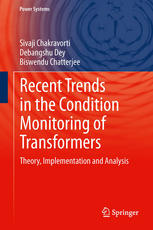

Most ebook files are in PDF format, so you can easily read them using various software such as Foxit Reader or directly on the Google Chrome browser.
Some ebook files are released by publishers in other formats such as .awz, .mobi, .epub, .fb2, etc. You may need to install specific software to read these formats on mobile/PC, such as Calibre.
Please read the tutorial at this link: https://ebookbell.com/faq
We offer FREE conversion to the popular formats you request; however, this may take some time. Therefore, right after payment, please email us, and we will try to provide the service as quickly as possible.
For some exceptional file formats or broken links (if any), please refrain from opening any disputes. Instead, email us first, and we will try to assist within a maximum of 6 hours.
EbookBell Team

4.3
68 reviewsRecent Trends in the Condition Monitoring of Transformers reflects the current interest in replacing traditional techniques used in power transformer condition monitoring with non-invasive measures such as polarization/depolarization current measurement, recovery voltage measurement, frequency domain spectroscopy and frequency response analysis. The book stresses the importance of scrutinizing the condition of transformer insulation which may fail under present day conditions of intensive use with the resulting degradation of dielectric properties causing functional failure of the transformer.
The text shows the reader how to overcome the key challenges facing today’s maintenance policies, namely:
The selection of appropriate techniques for dealing with each type of failure process accounting for the needs of plant owners, plant users and wider society; and
Cost-efficiency and durability of effect.
Many of the failure-management methods presented rely on the fact that most failures give warning when they are imminent. These potential failures give rise to identifiable physical conditions and the novel approaches described detect them so that action can be taken to avoid degeneration into full-blown functional failure. This “on-condition” maintenance means that equipment can be left in service as long as a specified set of performance standards continue to be met, avoiding the costly downtime imposed by routine and perhaps unnecessary maintenance but without risking equally expensive failure.
Recent Trends in the Condition Monitoring of Transformers will be of considerable interest to both academic researchers in power systems and to engineers working in the power generation and distribution industry showing how new and more efficient methods of fault diagnosis and condition management can increase transformer efficiency and cut costs.